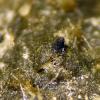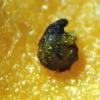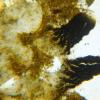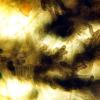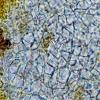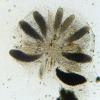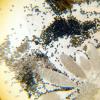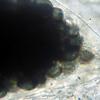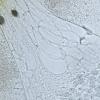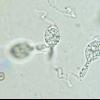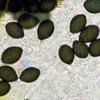
02-01-2026 17:43
MARICEL PATINOHi there, although I couldn't see the fruitbody, I

01-01-2026 18:35
Original loamy soil aside a artificial lake.The co

31-12-2025 19:27
Collected from loamy soil, at waterside (completel

30-12-2025 16:44
Pascal DucosBonjour,Une anamorphe rose stipitée, très nombre

30-12-2025 17:14
 Bernard CLESSE
Bernard CLESSE
Bonjour à toutes et tous,Pourriez-vous aider Albe

29-12-2025 10:15
Hulda Caroline HolteHello, I found and collected this propoloid ascom
Synonym:
Philocopra millespora Alf. Schmidt, Jber. Father. Culture 90: 24 (1912)
Rabenkopf near Heidesheim, TK 6014/2
Deerdung in culture
leg. Hagen Graebner
det. Ralf Dahlheuser
Sample collected 24.02.2018
Growing in culture 20.03.2018
The species was described in 1913 by Alfred Schmidt from Tanzania / Kenya. He bred them in Breslau on mulberry dung. It is also listed in the Checklist for Catalonia, where there are three finds from the same locality. Further finds unknown.
Banc de Dades de Biodiversitat de Catalunya
Abstract:
Finder: M. Valldosera
Location: TARRAGONA: Farena
Collections:
estiércol de cabra, recogido el 8-XII-85, comienzo del cultivo 9-I-86
estiércol de conejo, recogido el 8-XII-85, comienzo del cultivo 9-I-86
estiércol de oveja, recogido el 24-XI-85, comienzo del cultivo 26-XI-85
(Goat dung, collected on 8-XII-85, beginning of cultivation 9-I-86
Rabbit collection, collected on 8-XII-85, beginning of culture 9-I-86
Sheep dung, collected on 24.-XI-85, beginning of cultivation 26-XI-85)
Description:
Perithecia roundish 600-1000 µm, deeply sunken, later rising slightly from the substrate. Perithecium glabrous with few hyphae, cell wall translucent gray-greenish. Cells mostly 10-25 µm, mixture of Textura angularis and Textura globulosa.
Neck curled out of the substrate at maturity, 180-250 x 70-90 µm. Densely packed with clumps of thick-walled, curved hyphoid hairs up to approx. 15 x 4 µm. Hair tips rounded off.
Asci young cylindrical, bluntly rounded. At maturity, saccular, apical and basal tapering. Usually only one to three mature asci, which are surrounded by several immature different stages. Asci at full maturity often misshapen, easily disintegrating. 500-650 x 100-150 µm. 1024-spored.
Paraphyses consisting of cylindrical segments up to 70x15 µm. In a rounded cell ending up to 30x25 µm.
Spores 15,0 -16.6 x 10.3-11.1 µm with subapical germ pore. Pedicell 7-9 x 3-3.5 µm, rapidly collapsing at maturity. Apical caudae crooked, up to 20 µm long, about 1.5 µm wide. Basal caudae formed as apical. Measured estimated, since always strongly curved.
Many thanks for the kind support of Guy Garcia, Martin Bemmann, Michel Delpont and Norbert Heine




